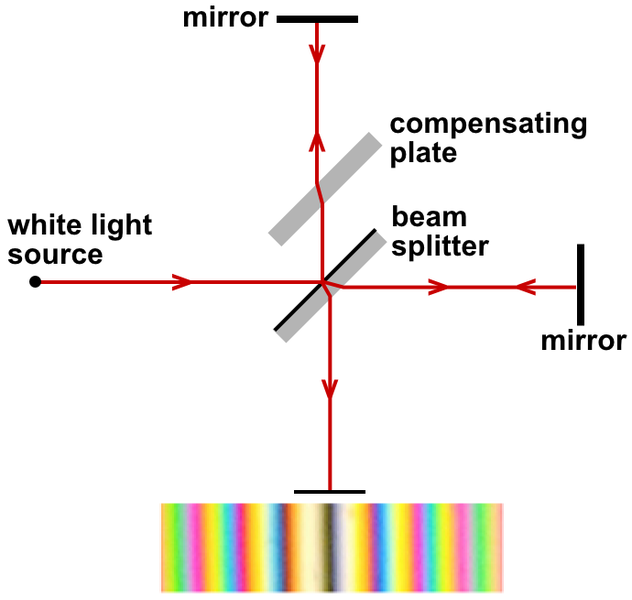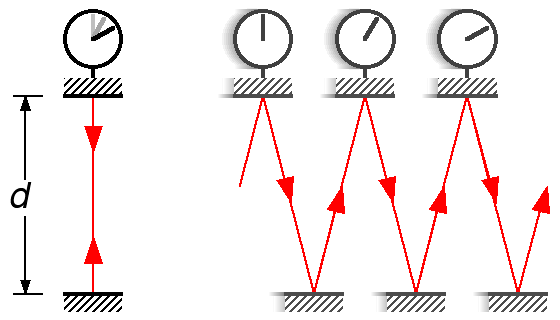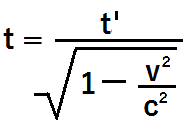Time Dilation - Simplified By Rahul
Welcome steemians! I am Rahul here and as promised I am back with an article explaining the concept of time dilation. So let's start.

Before starting let me ask you a question. Are you at rest or in motion? If you said at rest, you are wrong because the earth is revolving around the sun and hence you are in motion. If your answer was motion, still you are wrong. Why? Because if you ask someone sitting in front of you this question whether you are at rest or in motion, he will say you are at rest because you are not moving for him. Am I neither at rest nor in motion? But how is it possible? You may ask. The answer to your question is that my question is incomplete. The complete question should be something like this:
Are you at rest or in motion with reference to your friend? or Are you at rest or in motion with reference to the sun?
Now you can answer these questions correctly. From this, we can conclude that there is nothing as absolute rest or absolute motion. Now before going any further let's understand what is an inertial frame of reference?
a frame of reference in which a body remains at rest or moves with constant linear velocity unless acted upon by forces: any frame of reference that moves with constant velocity relative to an inertial system is itself an inertial system.
Sourced from www.dictionary.com
In 1686, Sir Issac Newton gave his three laws of motion which were only applicable to those macroscopic objects traveling with a speed not comparable to the speed of light. When his laws were applied to objects traveling with speed comparable to the speed of light they were not giving satisfactory results. But why? Because when things travel with very high speed their properties changes and thus produces errors when laws of motion are applied.

Sir Albert Einstein solved these problems using his theory of special relativity in 1906. According to Einstein, three things happen when an object or a person travel with speed comparable to the speed of light:
- Time for the person passes slower compared to the person observing him at rest. This is called Time Dilation.
- Length of the object contracts. This is called Length Contraction.
- Mass of that object increases.
In this article I will only be discussing about time dilation. I will talk about other two points sometime later in another article.
Now let's dig a little deeper and understand time dilation in detail.
Einstein in his theory of special relativity used two assumptions which now have been experimentally verified. First, laws of physics are applicable everywhere in universe. Second, speed of light is same for every observer no matter what. I know that second point is a little bit hard to digest but yes it's true. This was verified by Albert A. Michelson and Edward W. Morley in there very famous Michelson-Morley experiment.

Let's take this example to understand it better.
Assume there is a light clock and a man in a rocket travelling with almost the speed of light in space. You are observing him from earth. Now for both of you observation will be different. Something like this:

What he will observe What you will observe.
Now for both of you the distance travelled by light in some time say t will be different.

But how is possible? We know that speed of light is constant and since both of you are observing the light at the same instance. The only way it is possible is if time was passing slower for him(one in the rocket) or time was running faster for you. This is called time dilation.

This has been also verified experimentally by comparing two atomic clocks, one in space and another on our earth. Scientists observed that the atomic clock in the space was running a little bit slower compared to the one on earth. I know this is shocking yet true. We can even calculate the difference in time. We can actually derive a formula by using some mathematics in the above figures but I will not make this article a boring mathematics lecture. Here's is the formula which you can use to calculate time difference:

(here c is speed of light, v is speed of object, t' denotes time elapsed for the person on earth, t denotes time elapsed for the person travelling with speed v)
That's all about Time Dilation. I tried to keep it as simple as possible. Any suggestions are welcome.
If you enjoy reading my article don't forget to follow me and hit that upvote button.
Reference:
- Time Dilation - WikiPedia
- Time Dilation explained in Hindi - Vigyan TV
- Michelson-Morley Experiment
- Light Clock - WikiPedia
@resteemator is a new bot casting votes for its followers. Follow @resteemator and vote this comment to increase your chance to be voted in the future!
Congratulations! This post has been upvoted from the communal account, @minnowsupport, by rahulk200013 from the Minnow Support Project. It's a witness project run by aggroed, ausbitbank, teamsteem, theprophet0, someguy123, neoxian, followbtcnews, and netuoso. The goal is to help Steemit grow by supporting Minnows. Please find us at the Peace, Abundance, and Liberty Network (PALnet) Discord Channel. It's a completely public and open space to all members of the Steemit community who voluntarily choose to be there.
If you would like to delegate to the Minnow Support Project you can do so by clicking on the following links: 50SP, 100SP, 250SP, 500SP, 1000SP, 5000SP.
Be sure to leave at least 50SP undelegated on your account.
Congratulations @rahulk200013! You have completed the following achievement on Steemit and have been rewarded with new badge(s) :
Click on the badge to view your Board of Honor.
If you no longer want to receive notifications, reply to this comment with the word
STOPTo support your work, I also upvoted your post!
Do not miss the last post from @steemitboard:
SteemitBoard World Cup Contest - The results, the winners and the prizes